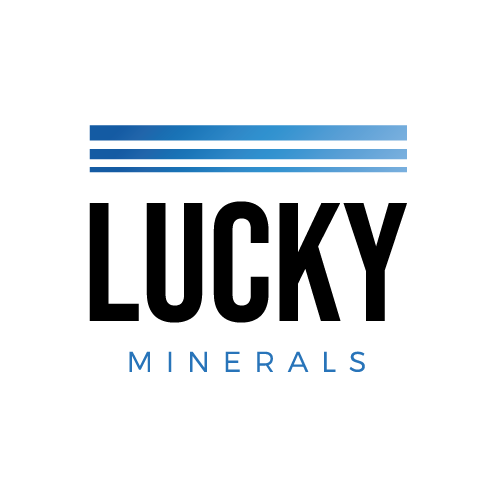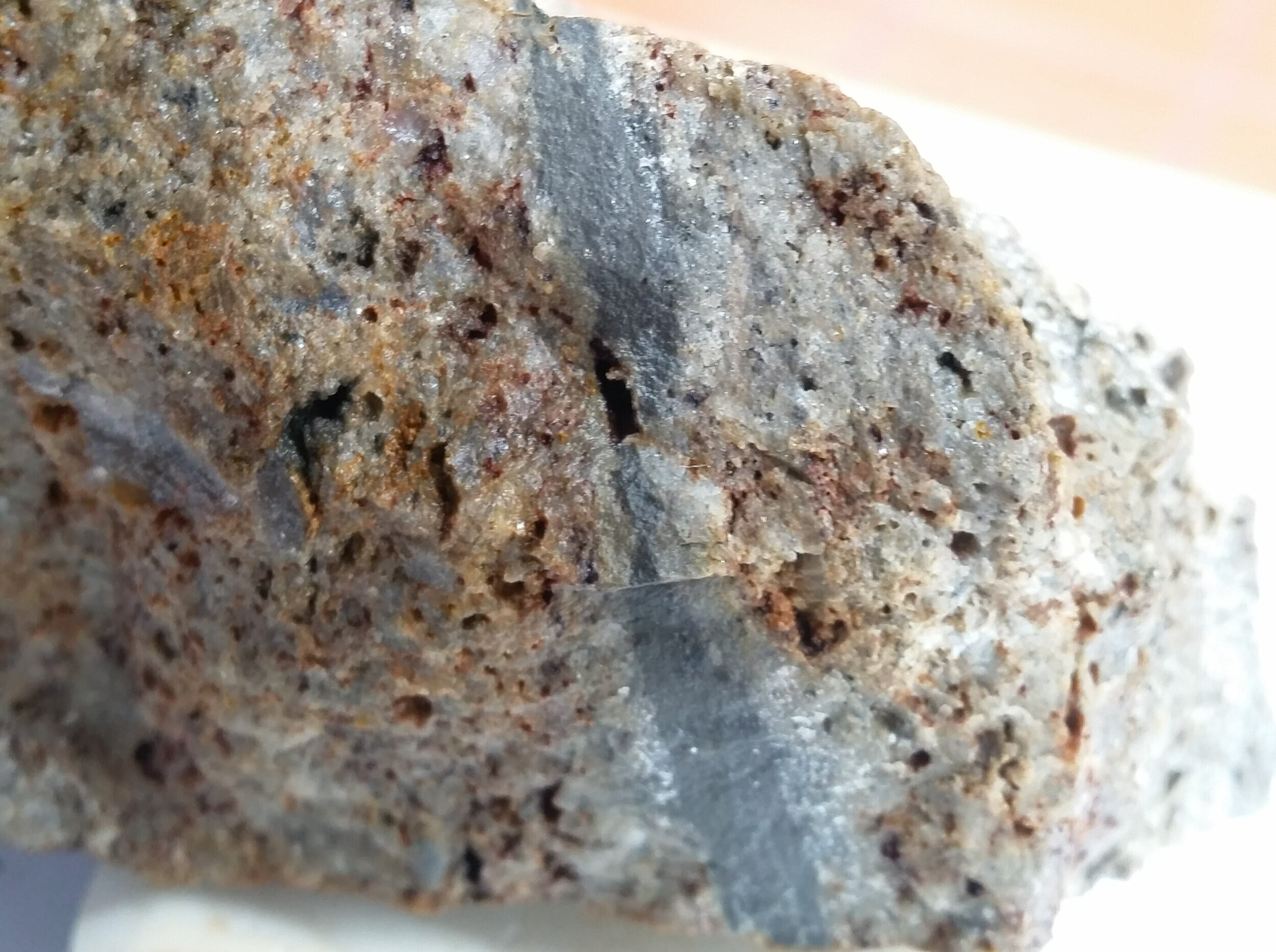What is an Epithermal Gold-Silver Deposit?
Epithermal gold-silver deposits are formed by geothermal fluids circulating in the earth’s crust.
These fluids are hot and acidic, and they come directly from an intrusion of magma that has come up from the mantle into the crust and brings with it gases and unusual minerals, including gold and silver.
Gold-silver and other minerals are then precipitated out as these fluids approach the surface, normally at a depth of less than 600 m from the surface.
Epithermal gold-silver deposits are hosted in almost any rock type, but are more often found in igneous and sedimentary rocks.
What is the difference between low-sulfidation epithermal deposits and high-sulfidation epithermal deposits?
The difference between low-sulfidation epithermal deposits and high-sulfidation epithermal deposits is actually much simpler than you might first think. Its all to do with what happened to the magmatic fluid as it approached the surface.
In low-sulfidation deposits the magmatic fluids get closer to the surface normally less than 300 meters below the surface, but can be as deep as 1 km. The magmatic fluid is cooled and diluted by its interaction with naturally circulation groundwater and the pH of the magmatic fluid is neutralized.
Gold deposition occurs as a result of a drop in confining pressure associated with the fluids rise to surface. This causes the fluid to boil, which results in the gold dropping out. This normally occurs within fractures in the host rock forming veins.
These veins are usually banded with alternating layers of silica and carbonates. Boiling zones can be anything from 50 meters to 800 meters thick but are normally less than 300 meters thick.
When the remaining fluid reach the surface it forms a hard siliceous sinter terrace, a key prospecting indicator of a low-sulfidation epidermal system. Alteration is not nearly as pervasive as in a high-sulfidation systems and rarely extends far beyond the structures.
In high-sulfidation deposits the magmatic fluids do not interact with the ground water and these deposits are normally formed deeper, less than 500 meters to 1,000 meters below the surface and are usually related to porphyry deposits at depth.
These fluids rise above the intrusions and dissolve the host rock as they pass through it, leaching minerals turning them into clays, forming successive halos of sericite, kaolinite and alunite. In the core of this alteration the fluids then remove the clays leaving behind a porous silica rich rock that looks like a sponge, known as vuggy silica.
Then late in the process, gold and silver can be transported by the fluids and deposited in the vuggy silica and these late-stage fluids mix with the shallow ground waters. High-sulfidation deposits tend to form as disseminations, breccias or veinlets.
So, what’s is better low-sulfidation or high-sulfidation deposits?
In general, low-sulfidation gold-silver deposits tend to be higher-grade and lower-tonnage, while high-sulfidation gold-silver deposits tend to be lower-grade and higher-tonnage and tend to have higher overall gold contents. That said, the grade tonnage distribution of these two types of deposit is not discrete with a large over lap and many exceptions to this very general rule. High-sulfidation deposits also tend to be richer in sulfides.
How big can high-sulfidation epithermal deposits be?
Epithermal gold-silver deposits range in size from 10,000 tonnes to over 1 billion tonnes and have gold grades that vary from 0.1 g/t up to 30 g/t. These deposits are estimated to contain about 8 percent of global gold production.
Three of the largest high sulfidation epithermal deposits in the world are Yanacocha in Peru, Pueblo Viejo in the Dominican Republic, and Pascua-Lama-Veladero in Chile/Argentina.
The Yanacocha Gold Mine is the fourth largest gold mine in the world. Since starting commercial production in 1993 it has produced around 40 million ounces of gold and is expected to continue to operate until 2027.
The Pueblo Viejo Gold Mine commenced commercial production in 1975 and has produced over 12 million ounces of gold and 32 million ounces of silver and is expected to continue to operate until 2040.
The Veladero Gold Mine has been operational since 2005 and has produced over 10 million ounces of gold and over 17 million ounces of silver and is expected to continue to operate until 2027. The Pascua-Lama Deposit is located just 10 km from the Veladero Gold Mine; it has a total JORC 2012 complaint mineral resource estimate of over 21 million ounces of gold. The project has currently been halted on environmental grounds, should development recommence in the future the mine would have a life of over 25 years.
How do you explore for high-sulfidation epithermal gold deposits?
The key for any exploration program is to target the geologic characteristics that are favourable for mineralization to form. To gain an undstanding of what these characteristics are, exploration geologists need to extensively study similar types of deposits in a variety of jurisdictions. This is why the experience level of the exploration team is very important.
Lucky Minerals’ board and exploration team has a wealth of exploration experience with several mining industry veterans, with first hand experience of high-sulfidation epithermal gold deposits.
Typically, exploration for high-sulfidation epithermal gold deposits starts at the district scale, using high-resolution magnetics to map the alteration system and define large-scale structures that be related to gold mineralization. ASTER / WorldView3 image processing assists the exploration geologist in the remote mapping of the alteration assemblage helping to refine targeting towards fluid flow centres.
At Wayka, Lucky has already discovered an extensive alteration system and trenching and sampling at surface, has demonstrated the presence of gold mineralization. Lucky is currently completing a detailed magnetic survey ahead of a maiden drill program to refine its drill targets.
The next step in a high-sulfidation epithermal gold exploration program is a combination of geological mapping focusing on defining different alteration textures and breccia types, and induced polarization resistivity surveys that can define areas of hydrothermal alteration (vuggy silica) associated with gold mineralization. Fracture controlled vuggy silica is the dominant and ubiquitous feature of high-sulfidation epithermal gold deposits forming in the core of the system.
Lucky has already defined areas of gold-bearing vuggy silica at surface at the Wayka Target.
Exploration programs can also include the systematic alteration vectoring with handheld infra-red spectrometers and trace element soil and rock chip sampling looking for very low levels of Au-Ag and As-Sb-Pb-Te-Bi. This work is focused on evaluating these very large alteration systems and narrowing down a number of targets so that the next stage of exploration work can hopefully result in the discovery of a high-sulfidation epithermal gold deposits, which are typically significantly less than a square km in size.
While additional surface sampling and mapping will assist Lucky in refining its targets, the Company is already in the unprecedented position of having demonstrated the presence of significant levels of gold mineralisation at surface within a large high-sulfidation epithermal alteration system at the Wayka Target.
wHAT DO EPITHERMAL DDEPOSITS LOOK LIKE?
The schematic section below depicts a idealised epithermal deposit. The deposit contains a series of alteration zones grading outwards from the fluid source. The leached silicic zone, where the vuggy quartz is contained is nearest the fluid source. This grades into advanced argillic alteration, containing kaolinite, quartz and alunite, which changes to argillic alteration that is illite-rich and then into propylitic alteration that is characterised by chlorite and montmorillonite.
How valuable can they be?
When a high-sulfidation epithermal deposit is discovered the value of the junior company that owns the project can change dramatically, by several orders of magnitude, in a very short space of time. Here are some examples:
Arequipa Resources
Gain: +1,110% in one year
Listed in 1993 as a Peruvian exploration junior. At the start of the 1996 the company’s share price was around $2.5/share. Then early January 1996 surface sampling established the discovery of a high-grade gold-silver high-sulfidation epithermal system at the Pierina Project. Initial drill results drove the share price to $20/share and in October 1996 Barrick Gold brought the company for $30/share, valuing the Pierina discovery at $989 million.
Aurelian Resources Inc
Gain: +1,950% in 2 years
Was an Ecuador gold explorer that listed on the TSX-V in 2003 at a price of C$0.3/share and then made the Fruta del Norte intermediate sulfidation epithermal gold-silver deposit discovery in 2006 while the shares were around C$0.4/share. Aurelian proved up an inferred resource of 13.7 million ounces of gold and 22 million ounces of silver before being acquired by Kinross Gold Corp in 2008 for C$8.20/share valuing the Fruta del Norte discovery at C$1.19 billion.
Ventana Gold Corp.
Gain: +3,165% in 2.5 years
Listed in late 2008 as a gold exploration company focused in northeastern Colombia. The company came to market at a price of around $0.40/share and then took the La Bodega high-sulfidation epithermal deposit from discovery to a scoping study with a total resource of 3.5 million ounces of gold, 19.2 million ounces of silver and 84.6 million pounds of copper. The company was acquired by AUX Canada Acquisition Inc. in March 2011 for $13.06 per share offer, which valued the company at $1.5 billion.







